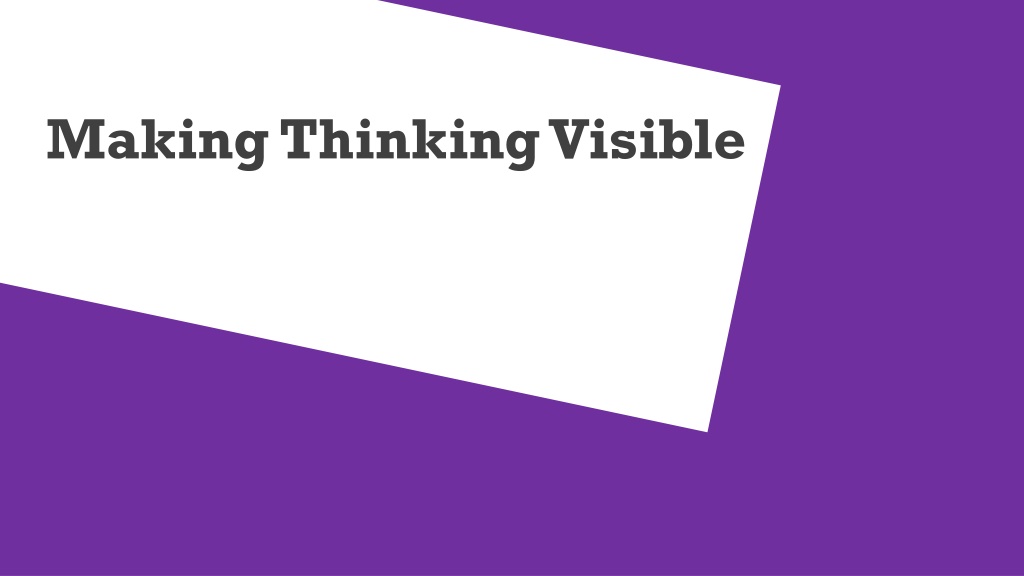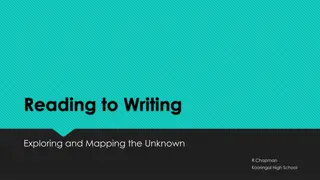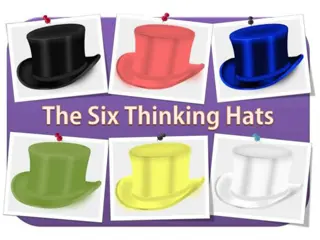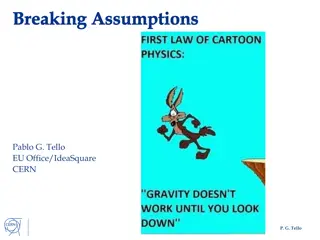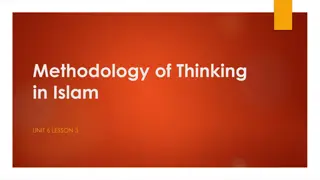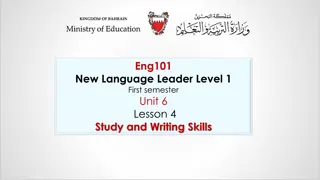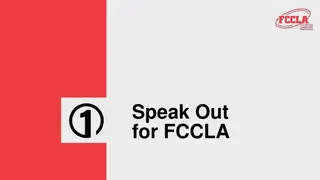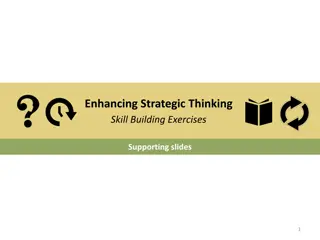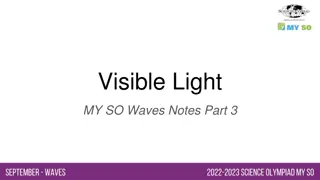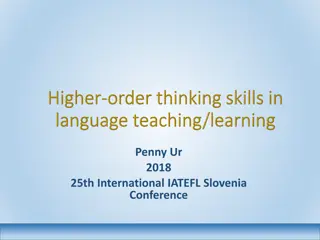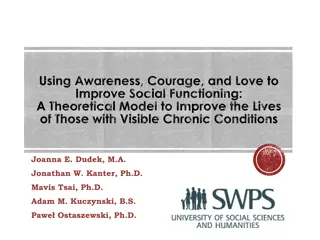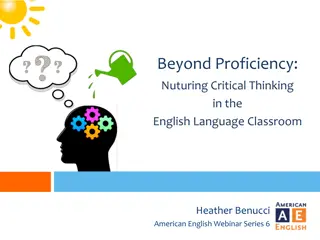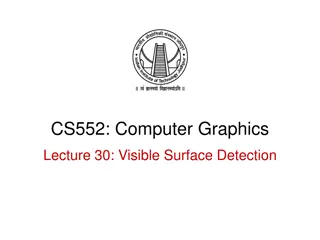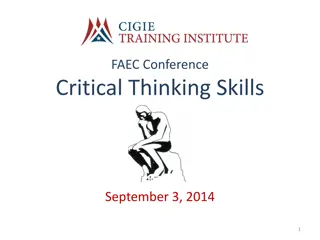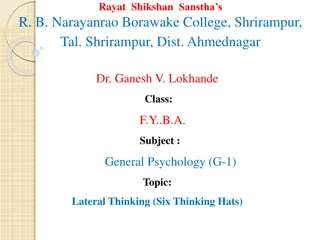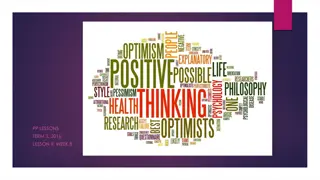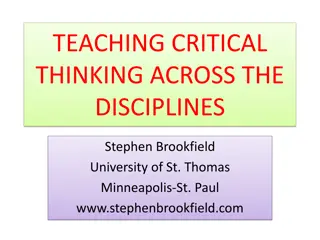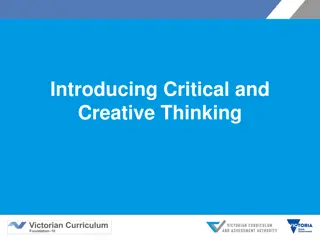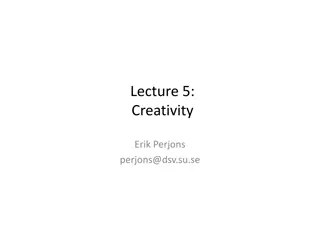Understanding Making Thinking Visible (MTV) and Its Impact on Learning
Making Thinking Visible (MTV) is a concept that integrates higher-order thinking skills with subject matter learning, aiming to develop students' critical thinking abilities alongside subject knowledge. Rooted in research by Harvard University's Project Zero group, MTV emphasizes sustained thinking to support knowledge acquisition. This presentation explores the core routines of MTV and highlights the significance of supporting educators in implementing research-based practices for effective teaching and learning.
Download Presentation

Please find below an Image/Link to download the presentation.
The content on the website is provided AS IS for your information and personal use only. It may not be sold, licensed, or shared on other websites without obtaining consent from the author. Download presentation by click this link. If you encounter any issues during the download, it is possible that the publisher has removed the file from their server.
E N D
Presentation Transcript
Overview This short presentation aims to; Explore what MTV is all about Provide some context regarding this pilot Highlight seven core thinking routines
What is MTV? Making Thinking Visible (MTV) centres around integrating pupils higher order thinking skills with their learning across subject matter. As well as developing the way in which pupils think, it deepens subject knowledge. Create Evaluate Analyse Apply Remember Understand
What does the research say? Lots! Harvard University have been continually researching methods of enhancing learning and thinking through their Project Zero group, with MTV growing out of an initiative to develop a research-based approach to thinking dispositions. MTV aims to assist young people in the successful acquisition of knowledge, usable concepts and skills, which requires sustained thinking over time. (Ritchhart, et al, 2011)
What does the research say? we need to support practitioners to be able to act on lessons derived from research. (Research Strategy for Scottish Education, 2017)
Why could this be useful? MTV consists of thinking routines, which: are goal orientated (i.e. each routine targets a particular type of thinking) get used repeatedly in classrooms have only a few simple steps are easy to learn and teach can be used individually or in group can be used in multiple contents (practical, creative etc.)
Thinking Routines There are seven core routines that we will explore.
What makes you say that? A two question routine: 1. What s going on? 2. What do you see that makes you say that?
Think, Puzzle, Explore A three question routine: 1. What do you think you know about this topic? 2. What puzzles or questions do you have? 3. How can you explore this topic?
Think, Pair, Share A well used routine that asks pupils a question, and allows thinking time, before sharing with a partner. The class can then discuss varying viewpoints.
Circle of Viewpoints Sample script: 1. I am thinking of [topic] from the point of view of [character] 2. I think [describe the topic from said viewpoint be an actor!] 3. I question I d like to ask from this viewpoint is
I used to thinknow I think Have pupils write a response to the following statements: 1. I used to think 2. Now I think
See, Think, Wonder A three question routine: 1. What do you see? 2. What do you think about that? 3. What does it make you wonder?
Compass Points E = Excited What makes you excited about this idea? What s the upside? W = Worrisome What makes you worry? What s the downside? N = Need to Know What else do you need to know? What other info would help you evaluate? S = Stance / Suggestions for Moving Forward What s your current stance/thoughts? How can you move forward?
Next steps Try them! Discuss as a group which thinking routine might work best in your context, try it, and try it again.
Thanks to Ross Stewart at Hermitage Academy for sharing this presentation.
